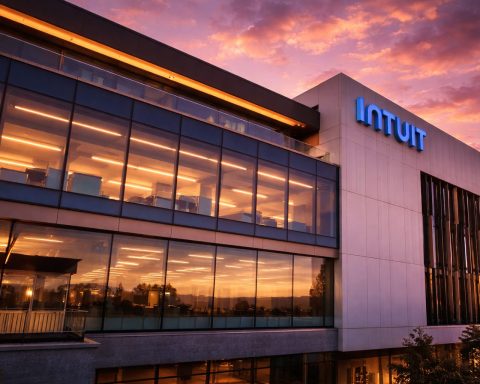- Name Change & Nasdaq Debut: Lobo EV Technologies Ltd. has rebranded to Lobo Technologies Ltd., launching new Class A shares on Nasdaq under ticker LOBO as of Oct. 16, 2025 [1]. The move is aimed at broadening market appeal.
- Stock Price & Volume Surge:LOBO stock trades around $0.93 per share, with wild intraday swings ($0.86–$0.97 on Oct. 16) [2]. Trading volume spiked to ~12 million shares, far above the ~8.8 million average [3], reflecting intense retail interest.
- Analyst Outlook:Caution prevails – the latest analyst rating is “Hold” with a mere $0.50 price target [4]. TipRanks’ AI flags profitability challenges and weak momentum for LOBO [5], despite the company’s growth plans.
- Growth Projections: LOBO forecasts 2025 revenue of $28–30 million (up 41.5% YoY) and a record $3 million net profit [6]. This follows 2024 sales of $21.2 million (but a small net loss due to expansion costs) [7].
- “Undervalued” Claim: CEO Huajian Xu insists LOBO is deeply undervalued, trading at just ~1× earnings and 0.2× sales [8]. He points to surging demand for LOBO’s affordable e-bikes, e-trikes, and golf cart-style EVs, especially in emerging markets [9].
Nasdaq Debut and Volatile Trading
Lobo’s corporate makeover took effect on Oct. 16, when shareholders’ approval of a name change (dropping the “EV”) and a share reclassification became official [10]. That morning, LOBO opened on Nasdaq at $0.86 and oscillated up to $0.97 before closing flat around $0.93 [11]. This frenetic trading came on unusually heavy volume, underscoring heightened interest around the rebrand. The Class A ordinary shares carry the same ticker “LOBO” but signal a new chapter for the company’s capital structure. Management framed the changes as a strategy to “enhance [LOBO’s] market presence” and reflect broader tech ambitions beyond just electric vehicles [12].
Despite the fresh start, LOBO’s stock remains a penny-stock rollercoaster. It trades well below its 52-week peak of $3.00, though also off the lows of ~$0.36 [13]. Year-to-date the share price is down roughly 33% [14], indicating earlier losses not yet recouped. Notably, back in May the stock skyrocketed 62% in a single day after a bullish forecast (more on that below), showing how quickly sentiment can swing [15]. The rebranding didn’t ignite such a rally, but the buzz on trading forums was palpable, contributing to the day’s huge turnover.
Current Price Snapshot & Momentum Signals
As of mid-October, LOBO hovers around $0.93 per share [16], giving it a market capitalization just under $10 million [17]. To put that in perspective, LOBO is worth only ~0.001% of Tesla’s valuation [18] – a reminder of its micro-cap scale. Such tiny stocks often see outsized volatility, and LOBO is no exception. The stock’s average daily volume tops 8.7 million shares [19], an unusually high churn relative to its ~11.9 million share float. This hints at day traders and momentum players actively flipping the stock.
Technical indicators for LOBO send mixed messages. TipRanks’ “Spark” model (an AI analyst) rates LOBO as Neutral, noting “weak momentum” on technicals [20]. The stock failed to hold above $1 – an important psychological and regulatory threshold (Nasdaq generally requires shares >$1). In fact, LOBO received a Nasdaq minimum-bid warning in May when its price dipped, a compliance hurdle it still needs to overcome [21]. Unless the stock can sustain a rebound or enacts a reverse split, that looming delisting risk remains a concern for investors.
On the charts, LOBO’s 2025 price trend has been a wild ride – a sharp spring rally, a summer slump, and choppy trades into fall. The May spike to around $1.30 gave a glimpse of upside potential, but subsequent pullbacks have kept shares in penny-stock territory. Momentum traders may be eyeing prior highs as targets, yet analysts warn the stock’s underlying fundamentals must catch up for any rally to hold.
Fundamentals: High Growth Ambitions vs. Past Losses
Under the hood, Lobo Technologies is a niche EV manufacturer focusing on smaller, affordable electric vehicles. The China-based company (headquartered in Wuxi, Jiangsu) designs and sells e-bikes, e-mopeds, e-tricycles, and off-road electric carts (like golf carts and mobility scooters) [22]. It also has a tech side, offering in-vehicle software and even dipping into AI-powered mobility gadgets. This dual approach – vehicles and tech – yielded $21.2 million in revenue in 2024, a 36.9% jump from 2023 [23]. However, aggressive expansion and the costs of becoming a public company pushed LOBO to a net loss of ~$0.85 million in 2024 [24]. In the first half of 2025, losses actually widened ( -$0.28 per share vs -$0.042 a year prior) [25], reflecting continued growing pains.
LOBO’s management insists brighter days are ahead. The company issued full-year 2025 guidance forecasting $28–30 million in revenue – +41.5% year-over-year – and roughly $3 million in net profit [26]. Achieving that would mark LOBO’s first significant profitability and a dramatic turnaround from red ink to a ~10% net margin. The optimism stems from robust sales of its two- and three-wheel EVs in key markets and improved efficiency. Notably, LOBO cites Latin America as a booming new market for its e-mobility products, after initial success in Eastern Europe [27]. A recent $6 million deal to supply 5,000 small EV shuttles to a U.S. distributor underscores its global push [28] [29].
To support growth, LOBO has been expanding production and product lines. It upgraded IT systems to streamline manufacturing, helping boost gross margins [30]. The company also launched higher-margin offerings like recreational four-wheelers and smart mobility robots. At China’s 2025 Canton Trade Fair, LOBO unveiled a 160 km/h electric motorcycle that garnered “strong market feedback” for its high-speed capabilities [31]. These developments hint at a broader portfolio beyond basic e-bikes – potentially lifting future profit per unit.
Despite these positives, fundamental risks abound. LOBO’s gross profit margin stood around 11.6% recently [32], relatively thin for the sector. The firm’s cash flow has been negative [33], and scaling production globally will require capital. Any delays in expected sales (for instance, if economic conditions worsen in target markets) could strain its finances. In short, LOBO is banking on rapid growth to justify its existence on the public markets – a classic high-risk, high-reward equation.
CEO’s Take: “Deep Discount” and Strategic Vision
Company leadership remains unabashedly bullish. CEO Huajian Xu has been actively promoting LOBO’s story, from press releases to even a Bloomberg TV spot via RedChip’s micro-cap showcase. “We are scaling responsibly while seizing opportunities in high-potential markets,” Xu said, describing LOBO’s expansion strategy [34]. He emphasizes that LOBO’s current market value doesn’t reflect its fundamentals – pointing out the stock’s “1× earnings and 0.2× sales” valuation multiples [35]. (By comparison, many EV companies trade at double-digit sales multiples despite losses.) In Xu’s view, LOBO is dramatically undervalued relative to peers, giving contrarian investors a chance to get in early [36].
The CEO also stresses LOBO’s focus on underserved markets and niches. By targeting affordable EV mobility for both urban and rural users, the company avoids head-on competition with auto giants. LOBO’s e-bikes and trikes cater to cost-conscious consumers in regions where two-wheelers dominate. “Lobo’s mobility solutions cater to both urban and rural communities,” Xu noted, signaling early stages of global market penetration [37]. The firm’s international partnerships – from Serbia to Indonesia to a U.S. distributor in Atlanta – are meant to establish beachheads abroad [38] [39].
Crucially, Xu has acknowledged short-term headwinds (like those Nasdaq compliance worries and higher costs) but maintains that long-term value creation is the priority [40]. Plans include developing AI-powered EV tech and even exploring localized manufacturing in key regions [41], which could mitigate supply chain issues and trade tariffs down the road. This expansive vision is encouraging, but the market remains in “show me” mode – wanting to see concrete earnings and sustained stock performance before fully buying in.
On Wall Street’s side, formal coverage of LOBO is sparse (it’s below many analysts’ radar), but at least one independent research call echoes some caution. TipRanks reports an analyst rating of Hold with a $0.50 target [42], implying potential downside from current prices. The skepticism likely stems from LOBO’s tiny float, volatile trading, and unproven profitability. No major bank has initiated coverage yet, but if LOBO delivers its $3 million profit forecast, we may see more analysts pay attention – for now, though, the only loud bullish voices are LOBO’s own management and its retail fanbase.
EV Sector Context: Niche Player in a Fierce Market
LOBO’s story unfolds amid a complex global EV landscape in 2025. Industry leaders are navigating growth and challenges – for instance, China’s BYD delayed opening a major EV factory in Europe (pushing its Hungary plant to 2026) and shifted focus to a higher-volume facility in Turkey [43]. Meanwhile, legacy automaker Stellantis struck a deal with startup Leapmotor to sell Chinese EVs in Africa [44], underscoring how even giants are seeking niches and new markets. This broader context is a double-edged sword for Lobo Technologies.
On one hand, LOBO’s emphasis on e-bikes and micro-EVs taps into segments largely ignored by big carmakers. Developing countries in Asia, Africa, and Latin America are seeing rapid adoption of electric two-wheelers – a trend LOBO is positioned to exploit. The relatively low price point of its vehicles could be attractive as emerging markets electrify transportation. There’s also less direct competition; Tesla isn’t making electric mopeds, after all.
On the other hand, competition is never far away. Local players and established motorcycle companies are crowding into the e-scooter/trike space. Margins on low-cost EVs are slim, and scaling up manufacturing is difficult without deep pockets. Moreover, if EV industry headwinds (like high battery costs or supply bottlenecks) hit, smaller firms feel the pinch first. Investors should note that even high-flying EV stocks have hit turbulence in 2025 – for example, many U.S. EV startups saw shares sink amid production hiccups and financing woes. LOBO, being micro-cap, would be particularly vulnerable if sentiment toward speculative EV names sours.
That said, LOBO’s minuscule valuation leaves room for outsized percentage gains if it can execute. The company’s current price-to-sales of ~0.2× [45] is far below not only Tesla, but also smaller peers like Niu Technologies (a Chinese e-scooter maker) or Electrameccanica (maker of three-wheeled EVs). Such deep value metrics are rare in the EV sector, known for sky-high valuations. This suggests that if LOBO even inches toward its targets, the stock could rerate higher. The flip side is that micro-caps often appear “cheap” right before they flame out – distinguishing a hidden gem from a value trap is the challenge.
Retail Buzz: Social Media Hype and Sentiment
Much of LOBO’s recent momentum can be attributed to hype on social investing platforms. On Stocktwits (a popular trader forum), LOBO’s follower count surged 28% in one week during May’s run-up, the largest jump among all auto stocks tracked [46]. Even now, LOBO remains a trending ticker in penny-stock circles. Posts oscillate between sky-high optimism and cautionary skepticism, though the bulls are louder.
In the wake of the company’s rosy projections, one exuberant user declared “$LOBO will kiss $10+ in one session,” while another chimed in “This stock should be $550 per share easy based on solid fundamental analysis.” [47] Such hyperbolic targets (which imply a 1,000%–50,000% gain from current levels!) highlight the speculative fever surrounding LOBO. Memes and moonshot predictions are common, with some traders clearly viewing LOBO as a lottery ticket in the EV revolution.
However, more level-headed contributors point out reality: LOBO remains under $1 for a reason – its business is small and not yet consistently profitable. The company even issued a formal statement in July addressing unusual market activity, likely an attempt to temper unfounded rumors [48]. Veteran investors often warn that when message boards become overwhelmingly euphoric, it’s time to be careful. In LOBO’s case, the social media buzz has undoubtedly boosted liquidity and kept the story alive, but it can evaporate quickly if the stock falters or a new “hot” ticker steals attention.
For now, investor sentiment on LOBO is a tale of two worlds: the fundamentals-driven view (cautious, wait-and-see) versus the online buzz (aggressive, FOMO-driven). This divergence means high volatility – as seen by the stock’s swings and the need for a public caution statement by the company [49]. Anyone trading LOBO based on Twitter or Reddit chatter should do so with eyes open to the risks.
Outlook: What’s Next for LOBO and Its Investors?
For current shareholders, Lobo Technologies’ recent moves offer both reassurance and new questions. The rebranding and Nasdaq listing compliance efforts show management is serious about staying on a major exchange and attracting institutional interest. Delivering on its 2025 guidance would validate management’s confidence – if LOBO indeed posts a $3 million profit next year, it would prove the business model can scale, potentially rewarding believers with a higher stock price. Bulls argue that at today’s ~$10 million market cap, LOBO is a steal if its earnings reach even a fraction of what larger EV firms generate. In CEO Xu’s words, the goal is to “accelerate growth and profitability in 2024 and beyond,” leveraging strategic initiatives and a solidifying track record [50].
Prospective investors, however, should be mindful that LOBO is still a highly speculative micro-cap. The stock’s dramatic surges (and crashes) are driven as much by trader sentiment as by company news. Liquidity can dry up at times, and minor news (or forum rumors) could whipsaw the price. There’s also the outstanding matter of Nasdaq’s $1 rule – LOBO may need to execute a reverse stock split or show sustained price improvement in coming months to avoid a delisting, an event that typically hurts a stock’s value. Additionally, any equity raises or dilution (common as small companies seek growth capital) could pressure the share price.
On the bright side, LOBO operates in the booming EV field, but in a unique sub-sector (light electric mobility) that has genuine growth drivers. Globally, climate initiatives and high fuel costs are pushing consumers toward electric scooters, bikes, and micro-cars – a trend from which LOBO aims to profit. If the company can carve out a reputable brand in this space, it could potentially partner with larger firms or secure strategic investments (indeed, LOBO has been exploring an investment partnership with Strattners, a financial group [51]). Such a deal or any major order wins could be catalysts for the stock.
Analyst forecasts for LOBO’s long-term vary widely. Some AI-driven models predict modest upside (e.g. an average ~$0.80–$0.90 in a few months, per AInvest [52]), while the few human analysts remain on the fence [53]. Essentially, Wall Street is in “wait and see” mode, likely requiring tangible earnings and sustained >$1 trading before getting onboard. Until then, LOBO will likely continue to trade on news flashes and retail enthusiasm.
Investment Implications:
For those considering LOBO, the risk-reward profile is extreme. This stock could multiply in value if the company’s international EV sales take off and profits materialize – it’s not every day you find a growing EV company at a sub-$10M valuation. The rebrand and uplisting efforts show management’s intent to play in the big leagues, and early traction in markets like Latin America and Eastern Europe suggests a viable runway [54]. Long-term, if LOBO can become a recognized name in e-mobility (perhaps as an OEM supplier or via joint ventures), today’s price might look like a bargain.
Yet, the downside cannot be ignored. LOBO is essentially a penny stock with all associated pitfalls: potential dilution, compliance risks, reliance on a very small number of products, and vulnerability to any macro hiccup. Investors should be prepared for the possibility that LOBO’s ambitious forecasts don’t fully materialize – growth in emerging markets can be lumpy, and competition is fierce. In a bear case, the stock could drift under $0.50 (the level one analyst pegs as fair value [55]) or even slip off Nasdaq, which would severely limit liquidity.
Bottom line: LOBO offers a compelling story at the intersection of the EV boom and micro-cap opportunism. It has captured the public’s imagination with its penny-stock price and explosive moves, but now must execute in the real world to justify the hype. Current and potential investors should keep an eye on upcoming earnings reports, progress on that $28–30M revenue goal, and any signs of institutional interest or partnerships. In the meantime, expect the ride to stay bumpy. LOBO is where cutting-edge electric mobility meets classic market speculation – a combination that promises excitement, if not always stability, for those along for the journey.
Sources: Reuters [56] [57]; TipRanks [58] [59]; StockTitan/GlobeNewswire [60] [61]; Investing.com/Stocktwits [62] [63]; GlobeNewswire [64] [65]; TS2.Tech [66] [67].
References
1. www.tipranks.com, 2. www.reuters.com, 3. www.tipranks.com, 4. www.tipranks.com, 5. www.tipranks.com, 6. www.stocktitan.net, 7. www.investing.com, 8. in.investing.com, 9. in.investing.com, 10. www.tipranks.com, 11. www.reuters.com, 12. www.tipranks.com, 13. www.reuters.com, 14. in.investing.com, 15. in.investing.com, 16. www.reuters.com, 17. in.investing.com, 18. in.investing.com, 19. www.tipranks.com, 20. www.tipranks.com, 21. in.marketscreener.com, 22. www.reuters.com, 23. in.investing.com, 24. www.investing.com, 25. www.marketbeat.com, 26. www.stocktitan.net, 27. in.investing.com, 28. www.globenewswire.com, 29. www.globenewswire.com, 30. www.investing.com, 31. in.investing.com, 32. www.investing.com, 33. www.reuters.com, 34. in.investing.com, 35. in.investing.com, 36. in.investing.com, 37. www.investing.com, 38. www.globenewswire.com, 39. www.globenewswire.com, 40. in.investing.com, 41. in.investing.com, 42. www.tipranks.com, 43. ts2.tech, 44. ts2.tech, 45. in.investing.com, 46. in.investing.com, 47. in.investing.com, 48. www.globenewswire.com, 49. www.globenewswire.com, 50. www.accessnewswire.com, 51. in.marketscreener.com, 52. www.ainvest.com, 53. www.tipranks.com, 54. in.investing.com, 55. www.tipranks.com, 56. www.reuters.com, 57. www.reuters.com, 58. www.tipranks.com, 59. www.tipranks.com, 60. www.stocktitan.net, 61. www.stocktitan.net, 62. in.investing.com, 63. in.investing.com, 64. www.globenewswire.com, 65. www.globenewswire.com, 66. ts2.tech, 67. ts2.tech









